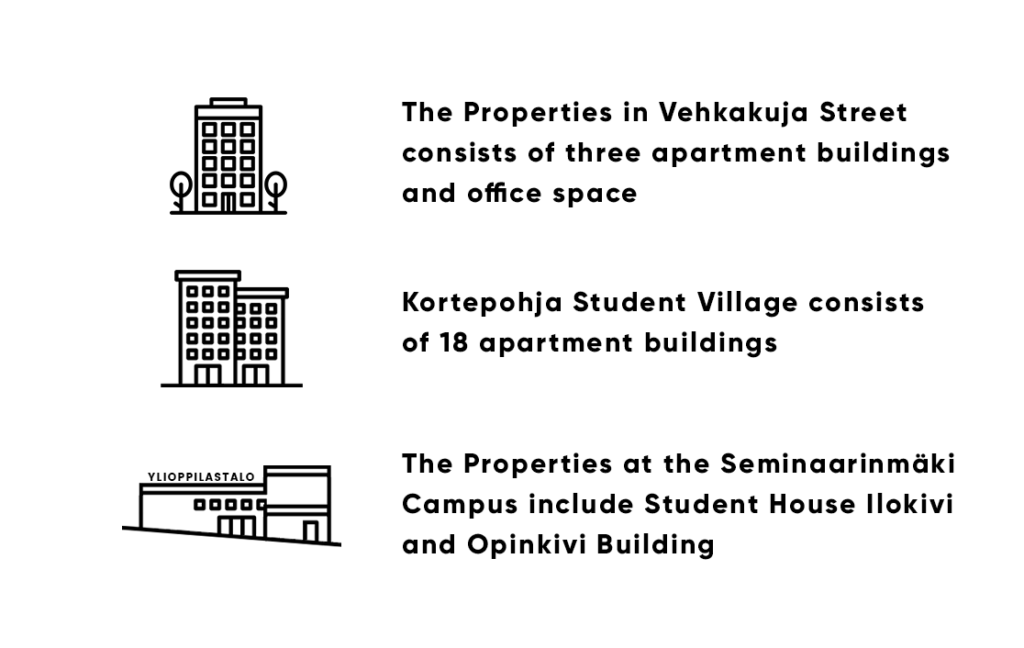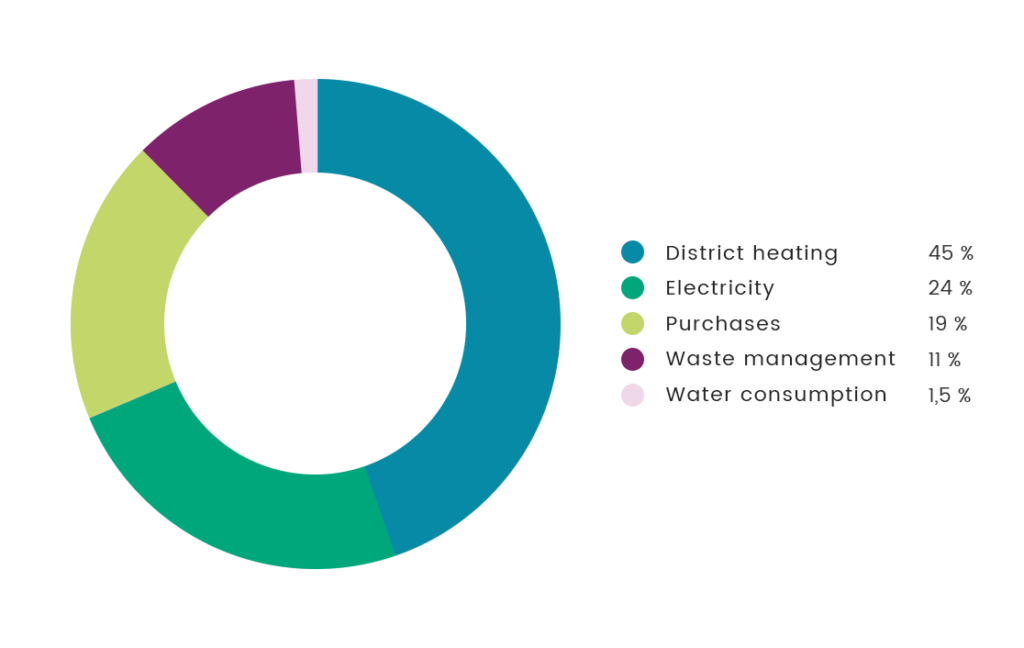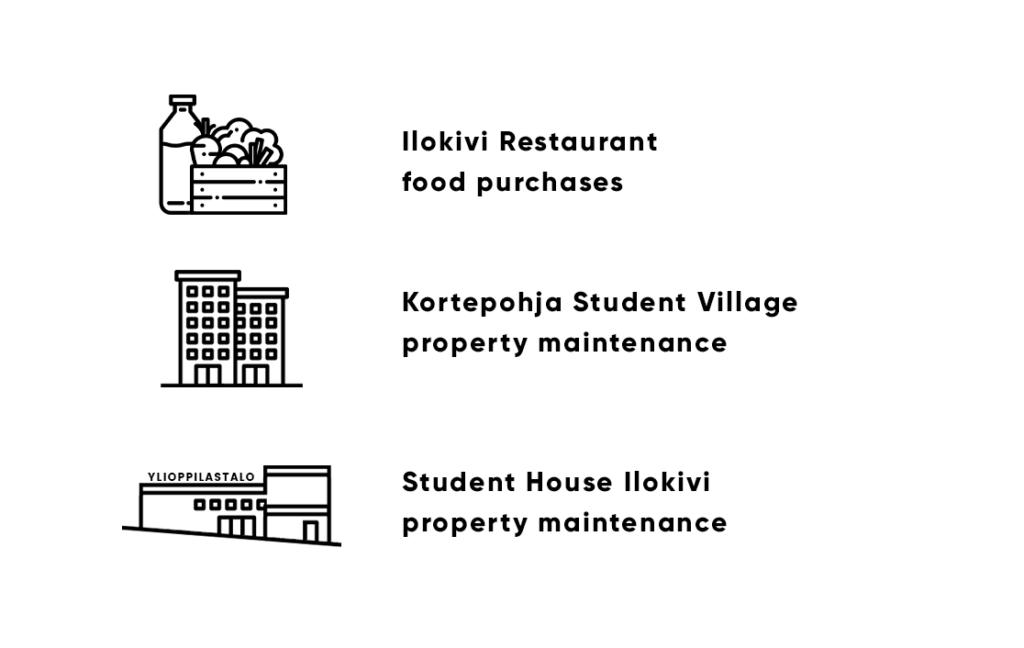What Is the Roadmap to Climate Sustainability?
The Roadmap for Climate Sustainability is the Student Union of the University of Jyväskylä (JYY) programme of measures towards more sustainable and climate responsible operations. The roadmap defines when JYY’s operations will achieve carbon neutrality and how different actions towards climate responsibility will be prioritized. The first step in the programme of measures has been to map JYY’s current carbon footprint.
What Is Carbon Footprint?
Organization’s carbon footprint is defined by how much greenhouse gasses is emitted through it’s operations. The unit in which the carbon footprint is measured is called carbon dioxide equivalent. A carbon dioxide equivalent is used to compare emissions from various greenhouse gasses by converting the emission amounts to the equivalent amount of carbon dioxide with the same global warming potential in the atmosphere.
In this programme of measures the carbon footprint calculation is based on the GHG protocol guidelines in which the gasses are categorized in emissions from direct operations, emissions from indirect operations and emissions from purchased energy.
How Was the Roadmap to Climate Sustainability Calculated?
Both Student Union’s core operations as well as Student Union’s business unit Soihtu’s operations were included in the calculation. The categories included in the calculations were heat, electricity, water and waste generated in the properties, purchased products and accessories for different operations, maintenance of the properties and food purchases for the Ilokivi Restaurant.
Data was collected from 2017 until 2019. The effects of Kortepohja Student Village high-rise building renewal, Student House Ilokivi renovation, Gummeruksenkatu Street Business Premises, data communications, individual events and commuting were excluded from the calculations.
The Division to Three Entitites
The project is divided in to three entities according to the location of the properties. The tree entities are 1) The Properties in Vehkakuja Street, 2) The Properties in the Student Village Kortepohja, and 3) The Properties at the Seminaarinmäki Campus.

The Results of the Carbon Foorprint Report
JYY’s total carbon footprint for 2019 is a total of 3,710 t of carbon dioxide equivalent. The single biggest source of emissions was district heating consumption (45% of the emissions). The second biggest source was electricity (24% of the emissions). Purchases produced a little smaller portion of the emissions (19% of the emissions). Share of waste were about one tenth of all emissions (11% of the emissions). Water consumption accounted for 1.5% of emissions. Transport and travel accounted for less than 1% of total emissions.
Five Biggest CO2 sources

Five biggest carbon dioxide sources were district heating consumption (45%), electricity consumption (24%), purchases (19%), waste (11%) and water consumption (1,5%). According to the report the carbon footprint of a resident of Kortepohja Student Village is smaller than that of an average Finn.
Energy and Water
Energy consumption produces most of the total carbon footprint and the most of the energy consumption comes from the Kortepohja Student Village. From the beginning of 2020 JYY has switched to using emission-free EKOenergia electricity.
Waste
a total of about 730 tonnes of waste was generated in the year 2019. Mixed waste accounted for 65% of all waste. Greenhouse gas emissions from waste consist mainly of mixed waste and biowaste.
Purchases
Three biggest entities in purchased were:

Recommended actions
The energy efficiency of JYY’s buildings should be improved, as energy forms a significant part of JYY’s total emissions. In addition to energy efficiency all other purchases from food purchases to office supplies should be kept to a minimum and sustainable. JYY can also seek to influence it’s partners and interest groups by means of communication and lobbying.